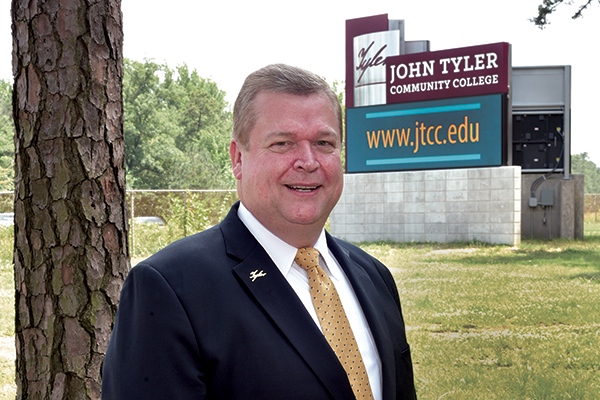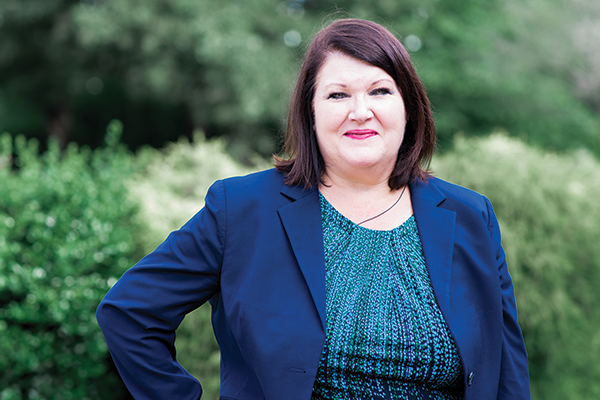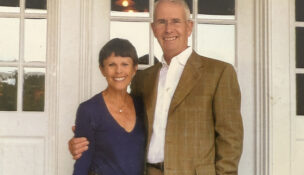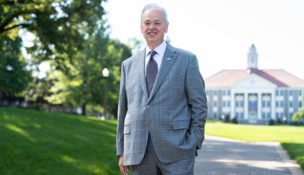A ‘working community’
Diverse student body shapes college’s culture
A ‘working community’
Diverse student body shapes college’s culture
Julia Bailey graduated from John Tyler Community College in May with an associate degree in liberal arts and something more.
Bailey, who will transfer to the University of Virginia this fall and plans to go to law school, earned a paralegal career studies certificate that she hopes will help her find part-time work as an undergraduate. It’s already landed her an internship for the summer.
Bailey took most of her classes at JTCC’s Chester campus — which is set to undergo a major expansion of its workforce training facilities — and it was there that she says that she came to understand what the “community” in community college means.
Sharing a campus with students on so many career pathways was “a very humbling experience,” she says. “It’s like seeing a working community.
“You have the transfer students but also the skilled-trade jobs. I was meeting students from all different backgrounds — they’re doing welding, electricity and HVAC,” she adds. “Then you have the engineers and the art people. That’s the really cool thing about community college.”

A career ‘pass-through’
“We’re a pass-through,” he says. “They’re going to pass through us, and they’re going to go to work or they’re going to pass through to a four-year school and then to work.”
Ensuring that the students’ foundation is on firm footing requires a closer collaboration with potential employers than in the past, he says. Economic development, once entwined with natural resources, now is more closely dependent on workforce development.
The $34 million Chester campus expansion reflects that linkage. Ground was broken in May on the project, which is to be complete in fall 2019. It will increase the space for business and industry training as well as for nursing and EMS programs.
The work will overhaul two buildings on the campus, which opened in 1967 as the first community college in the state to be built from the ground up.
A 25,503-square-foot addition will double the size of the Nicholas Center, allowing for a workforce development center with conference space and a multiuse laboratory focusing on skilled trades.
Bird Hall, one of the college’s original buildings, will be gutted and rebuilt to house the associate degree program in nursing and new labs for the natural sciences. The nursing program, now based at Johnston-Willis Hospital, will be expanded and co-located with paramedic training to facilitate the sharing of advanced simulation equipment.
Mellon Foundation grant
While workforce training and the sciences are the focus of the expansion project, the liberal arts also are getting a boost from a Mellon Foundation grant to map pathways to the arts and humanities.
Under the three-year, $1.48 million grant, JTCC, J. Sargeant Reynolds Community College and Virginia Commonwealth University will work to accelerate baccalaureate degree completion and strengthen faculty collaboration among the institutions.
John Tyler and Reynolds already collaborate on training programs through the Community College Workforce Alliance, which served 5,500 students in the 2017 calendar year through customized training programs.

“We get them ready in weeks or months,” she says, but the programs also can be an access point to a longer-term degree or credential.
Both colleges offer Bridge to Career programs that combine GED preparation with job skills training and career coaching. In February, JTCC expanded the program to offer classes at Petersburg High School “to serve the high level of need there,” she says.
Although such programs generally target young adults seeking entry-level employment, Carolyn Carlison signed up for a 15-week program at the Chester campus to earn her GED and a certified logistics associate certificate for a different reason.
“I did not want any of my grandchildren to know I had not graduated from high school,” says Carlison, 58, who left school after the 11th grade and works full-time in retail sales. She sees the program as “a stepping stone to the next level,” and describes working full time while taking classes as difficult but rewarding.
“It’s given me a lot of confidence because I know a lot more than I was giving myself credit for,” she says.
Concurrent enrollment
High-school students also are turning to community colleges to take advantage of a low-cost option that “gives them a leg up” in the workforce, Raspiller says
“We’re seeing more and more high-school students that want a credential or at least some dual enrollment credits before they graduate,” he says.
When students come to campus to take classes rather than taking college courses at their schools, the arrangement is called concurrent enrollment.
Concurrent enrollment is increasing, particularly among students from rural high schools, Raspiller says. JTCC enrolled 69 students in career studies certificate programs this academic year and expects the number to increase to 99 in the fall.
The students can learn skills such as precision machining “so they can go right from here to work,” Raspiller says.
While community colleges have seen enrollments decline as the economy rebounds, JTCC has run counter to that trend. Enrollment for the previous academic year was 13,930, about equally divided between the Midlothian and Chester campuses.
Though this year’s headcount is preliminary, enrollment was up 3.6 percent and 5.8 percent for the fall and spring semesters, respectively, according to Holly W. Walker, public relations manager for the college.
At the May commencement, more than 1,100 degrees and 1,600 credentials or certificates were awarded — reflecting the national trend toward “stackable credentials,” such as the paralegal certificate that Bailey earned.
For Bailey, a home-schooled Hopewell resident, the extra certificate wasn’t in her plans until she wrote a paper about a legal case that reinforced an interest in studying law.
Cost savings had been one of her main considerations in starting at a two-year school, so paying for the additional courses she needed for the certificate was something she had to weigh carefully.
“I’m one of four siblings, and we’re all pursuing a higher education,” she says. But she decided the certificate would help in finding part-time work while preparing her for law school.
Bailey chose JTCC because of its transfer agreements, she says, but now sees it as the right course even if she could have afforded to start at a four-year school.
“I came in thinking that I would just blend in with the crowd and be another number,” she says. But the connections Bailey made “opened up all these opportunities. I don’t feel like just another number in the crowd anymore.”

















